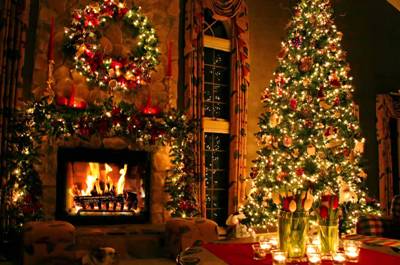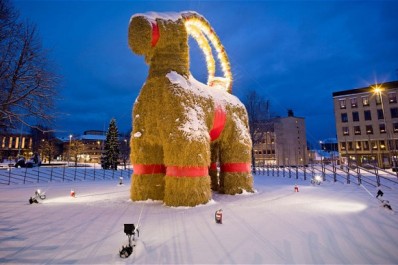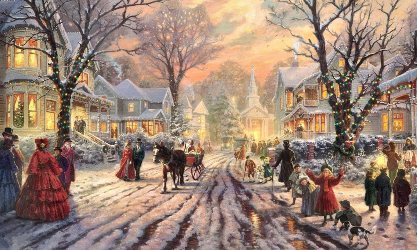
The winter solstice marked the short, harsh and dark winter days were coming to an end. Longer days and extended hours of sunlight are highly anticipated and brought hope to those seeking comfort in the sun. This Pagan celebration was soon absorbed by others and transitioned into a Christian holiday. The winter holiday became an anniversary celebration of the birth of Jesus. From one religion to another and constantly evolving, Christmas of today has religious implications but the commercialized aspects have far outgrown the religious ones. Narratives once revolved around Jesus, but Santa Claus has since become the integral character for Christmas stories.
Not always the popular holiday it is today, Christmas was outlawed in Boston from 1659 to 1681. Puritan beliefs countered the celebration and those participating in Christmas festivities were fined five shillings. While other settlements did not have these strict regulations and Christmas slowly gained popularity. Christmas was declared a federal holiday in the United States in on June 26, 1870. Globalization and developing technologies have changed and spread traditions. Each family has different traditions, as does each country. Other traditions and celebrations are unique to a country or town.

Christmas trees have become a symbol of Christmas. Christmas trees were first seen in Germany and immigrants brought the concept to the United States. Thought of as a Pagan tradition, it was not widely embraced initially. The first record of a Christmas tree being publicly displayed was in the 1830s. This display in Pennsylvania was created by German immigrants who had been decorating such trees in their communities for years. Popularity of Christmas trees grew after Queen Victoria and Prince Albert, who was German, were photographed with their children around one.
St. Lucia (Lucy) Day is celebrated widely, but most common in Scandinavia on December 13. The name Lucy refers to “light” and the celebration initially coincide with the winter solstice. To commemorate her death, a girl will dress in a white gown with a red sash around the waist. A crown of twigs and nine lit candles adorn her head. Processions are common in towns and one girl is selected for the honor of leading it. She will dress with the sash and crown of candles, but the other participants will carry a candle

Gävlebocken, the Gävle Goat, is a holiday display in Gävle, Sweden. Comprised of straw, the goat has cost upwards of a quarter of a million dollars to create and maintain. Since the tradition was introduced in 1966, the Gävle Goat has been destroyed by vandals 35 times in the past 50 years. Increased resources have been allocated to the protection of the display.
While everyone might be dreaming of a white Christmas, some have white sandy beaches. In the Southern Hemisphere, Christmas is in the middle of summer. Australians tend to go to the beach and have a picnic as their Christmas meal. The weather permits plenty of outdoor activities for the whole family to enjoy.

All in all, Christmas around the world is celebrated in various styles and fashions, but most people would agree that the most important part of Christmas is the time we spend with family!
Merry Christmas to all!
